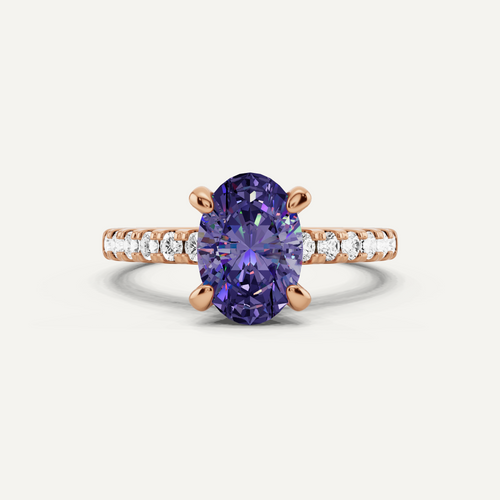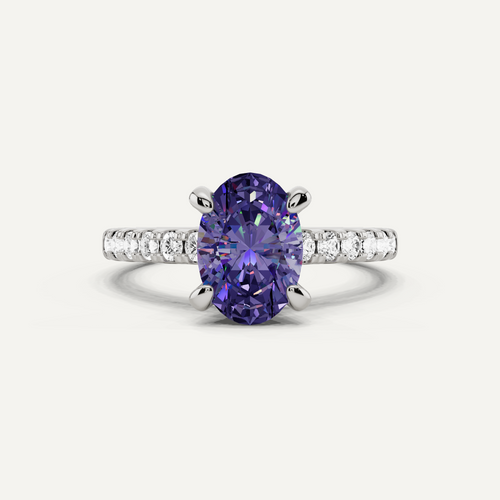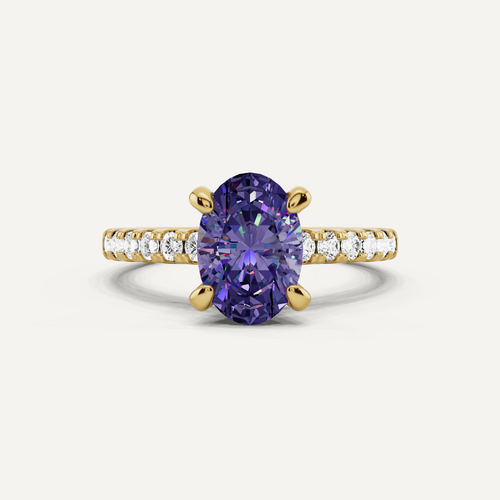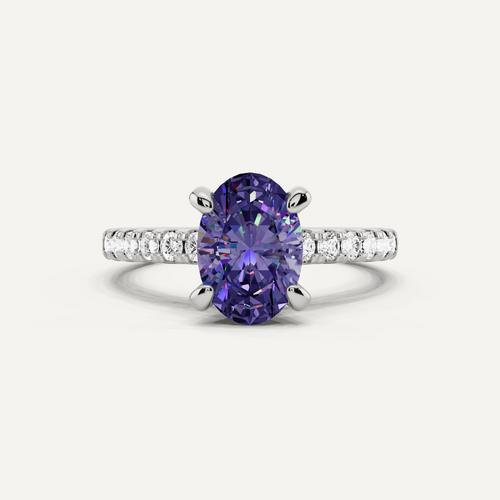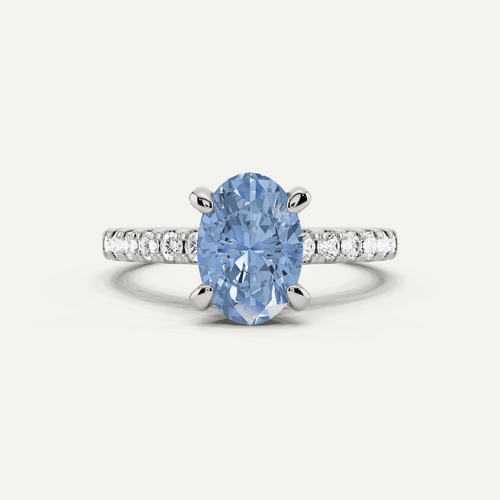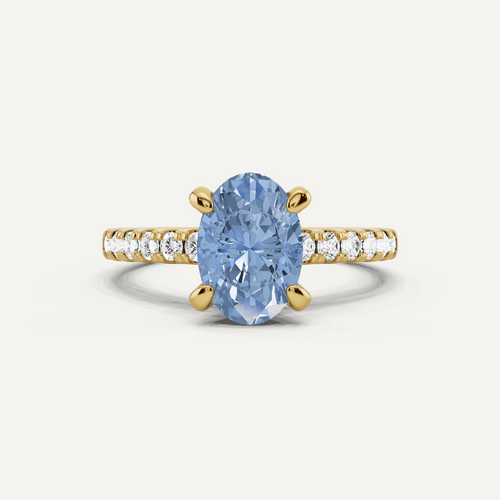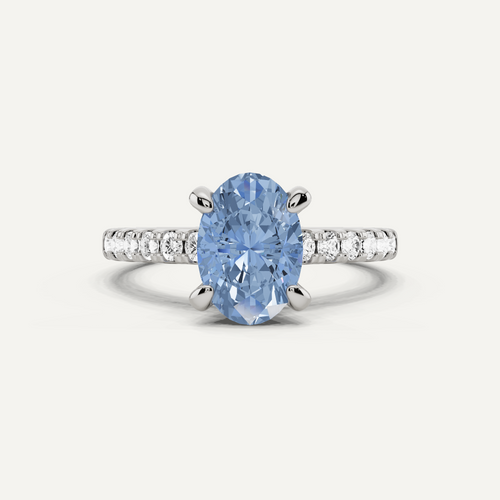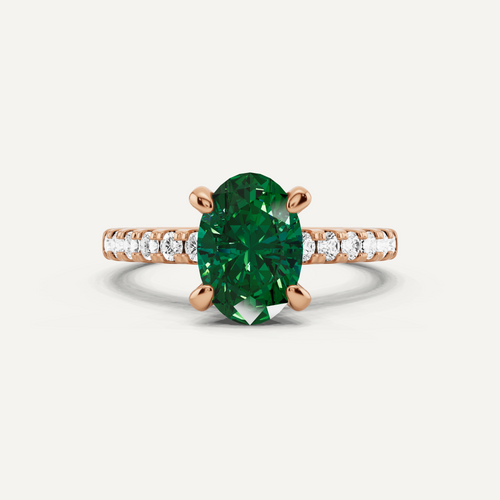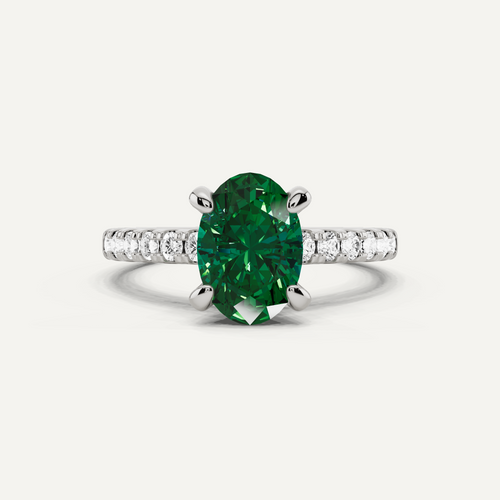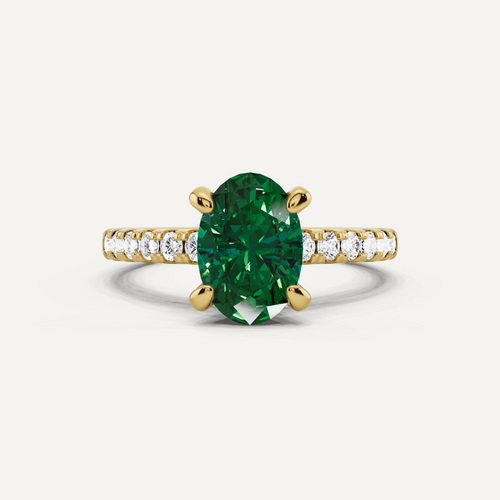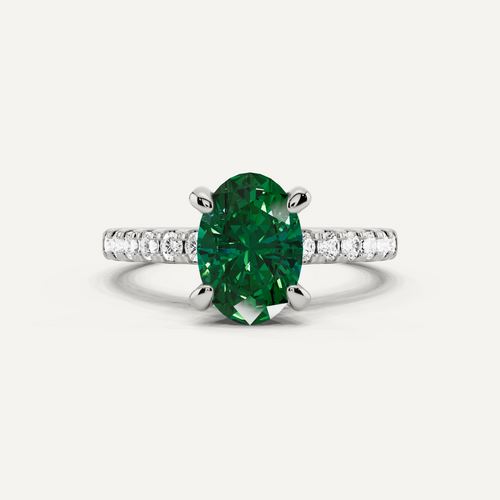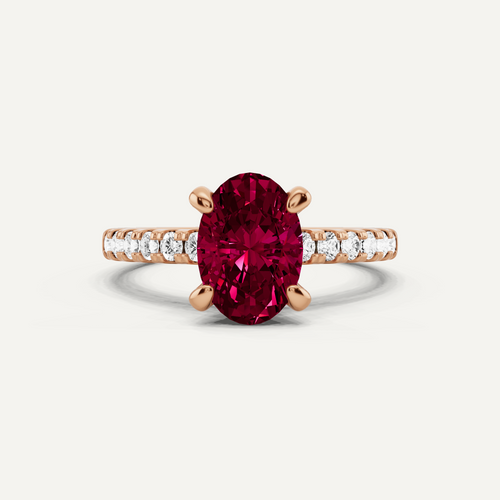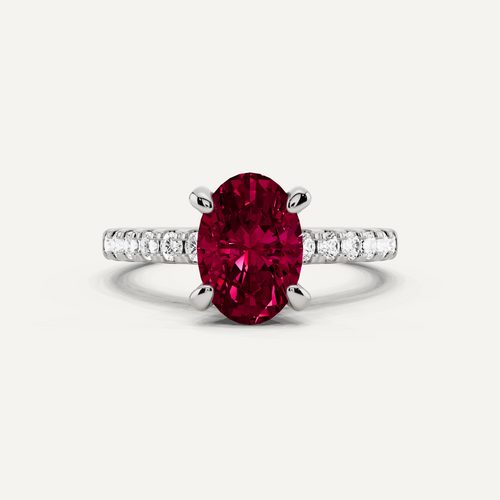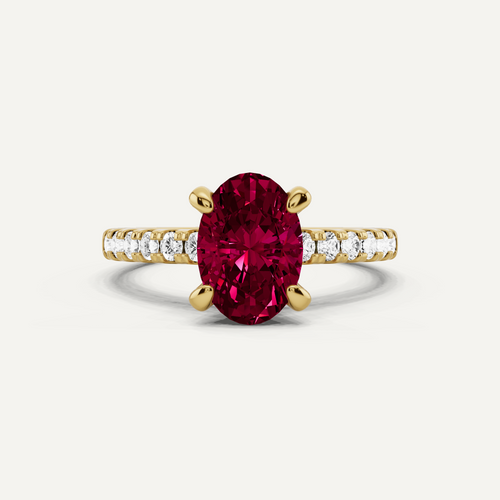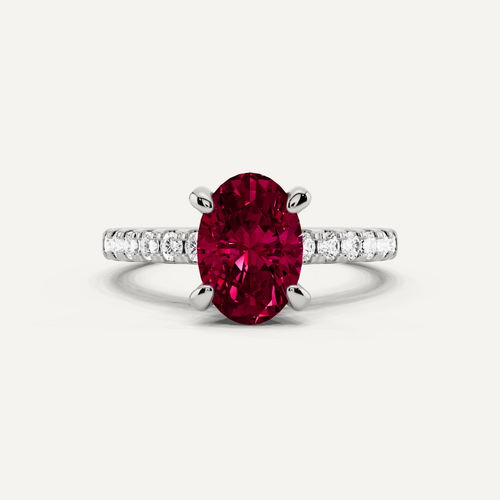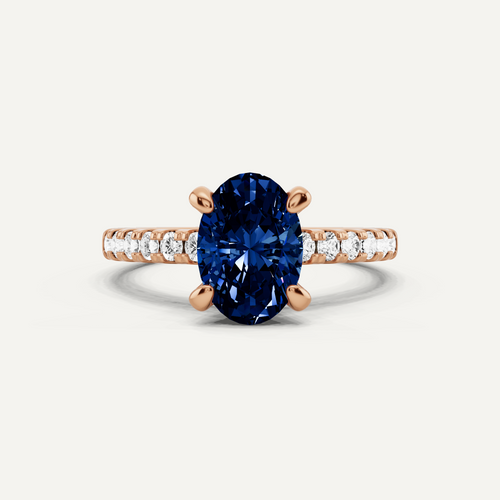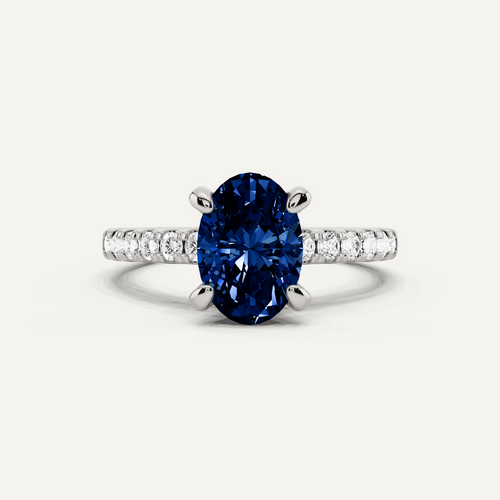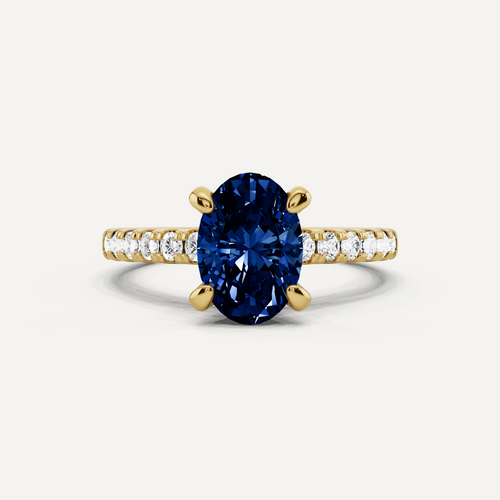Holiday Specials
Product Categories
Shop By Style
Blogs
Lab grown diamonds, also known as synthetic or cultured diamonds, are diamonds that have been created in a laboratory environment rather than being mined from the earth. They are chemically, physically, and optically identical to natural diamonds, with the same crystal structure, chemical composition, and optical properties. The key difference is the origin - natural diamonds are formed deep within the Earth's crust over billions of years under extreme heat and pressure, while lab grown diamonds are produced in specialized high-tech facilities that recreate these natural conditions. Advances in diamond growing technologies have made it possible to produce very high quality lab grown diamonds that are visually indistinguishable from their natural counterparts without specialized testing equipment.
There are two main processes used to grow diamonds in a laboratory setting - High Pressure High Temperature (HPHT) and Chemical Vapor Deposition (CVD). The HPHT method involves using a press to subject a small diamond seed or carbon fragment to extremely high temperatures (over 1,500°C) and pressures (up to 1.5 million pounds per square inch) to encourage new diamond growth. The CVD process, on the other hand, involves using gasses like methane and hydrogen that are broken down in a vacuum chamber using microwaves or lasers. This creates a plasma that deposits pure carbon atoms onto a diamond starter seed, building up the diamond layer by layer. Both techniques can produce high quality, gem-grade diamonds, but have different advantages in terms of growth speed, color, and cost. Overall, lab grown diamonds have the same crystal structure, optical properties, and chemical makeup as mined diamonds, the only difference being their origin.
Yes, lab grown diamonds are real diamonds. They have the exact same chemical, physical, and optical properties as diamonds that are mined from the Earth. The only difference is their origin - lab grown diamonds are created in highly controlled laboratory environments rather than being formed naturally deep underground over billions of years. But in every other way, they are genuine diamonds. They can be cut, polished, and used in jewelry and other applications in the same way as natural diamonds. The scientific community and major gemological institutes, such as the Gemological Institute of America (GIA), classify lab grown diamonds as real diamonds. So while the method of their creation is different, lab grown diamonds are just as authentic as their natural counterparts.
The primary differences between lab grown and natural diamonds are their origin and cost. Natural diamonds are formed deep within the Earth's mantle over billions of years under immense heat and pressure, while lab grown diamonds are produced in specialized high-tech facilities that replicate these natural conditions. This means lab grown diamonds can be grown much faster and at a lower cost compared to natural diamonds. On average, lab grown diamonds cost 50-70% less than natural diamonds of comparable quality. In terms of their physical and chemical properties, however, there is no difference - lab grown and natural diamonds are chemically and structurally identical. They have the same crystal structure, optical properties, and hardness. The only way to definitively tell them apart is through specialized gemological testing equipment. For all practical purposes, lab grown diamonds are real diamonds that are visually and functionally indistinguishable from their natural counterparts.
No, lab grown diamonds are not necessarily less valuable than natural diamonds. While it's true that lab grown diamonds generally cost less than natural diamonds of comparable quality, this does not mean they are inherently less valuable. Value is subjective and can be influenced by a variety of factors beyond just the origin of the diamond. Many consumers view lab grown diamonds as a more affordable and ethical alternative to mined diamonds, which can make them just as, if not more, valuable. Additionally, some high-end jewelry designers and consumers actively seek out lab grown diamonds for their environmental and social benefits. Ultimately, the value of a diamond, whether lab grown or natural, comes down to the individual's preferences, budget, and priorities. As long as a lab grown diamond meets the desired quality standards, it can be just as valuable as a natural diamond.
Discerning the difference between lab grown and natural diamonds is not a simple task for the average consumer. Without specialized gemological equipment and expertise, it can be very difficult to visually distinguish the two. Both lab grown and natural diamonds have the same chemical composition, crystal structure, and optical properties. The only way to definitively identify the origin of a diamond is through advanced testing methods like spectroscopy, which can detect subtle differences in the way the diamond interacts with light. Gemological laboratories and trained jewelers have access to this kind of specialized equipment and analysis. For the average person, the differences between lab grown and natural diamonds are virtually imperceptible to the naked eye. The only way to know for certain is to request documentation from a reputable source confirming the diamond's origin.
Yes, lab grown diamonds are just as durable and long-lasting as natural diamonds. This is because they have the exact same chemical and physical properties. Diamonds, whether grown in a lab or formed naturally underground, are the hardest known natural material on Earth, ranking 10 out of 10 on the Mohs Hardness Scale. Their crystalline structure makes them highly resistant to scratches, chips, and other types of damage. Lab grown diamonds have the same atomic structure and contain the same types of chemical bonds as natural diamonds. This means they exhibit the same exceptional hardness, durability, and longevity. Provided they are cared for properly, lab grown diamonds can be expected to last just as long as natural diamonds - essentially forever. The origin of the diamond has no bearing on its lifespan or physical integrity. Both natural and lab grown diamonds are incredibly resilient and will retain their beauty for generations to come.
As of now, the U.S. has imposed tariffs of up to 26% on lab grown diamonds and jewelry imported from India, and 30% on lab grown diamonds and jewelry imported from China.
Yes, they may. Starting August 27th, tariffs on imports from India could rise to as high as 50%, depending on final trade policy decisions. U.S. and China continue to have trade tensions.
U.S. retailers are now paying higher import duties, and many are passing those costs to customers through higher prices. Von Diamonds prices remain unchanged as we are moving our manufacturing to the U.S.
We’ve moved our manufacturing unit to the U.S., meaning our products are not subject to these import tariffs. In addition, we manage the entire supply chain in-house, from design to final setting, which keeps costs low and quality high. This means our prices will remain stable, even if tariffs increase to 50%.
No. Producing locally allows us to maintain tight quality control, offer fast turnaround times, and customize designs more easily, all while avoiding the extra costs associated with international shipping and tariffs.
With tariffs likely to rise in the coming months for most of the industry, prices from other retailers may increase soon. Von Diamonds’ prices will remain stable, but buying now ensures you can secure your piece before potential demand spikes or inventory pressure in the market.

























